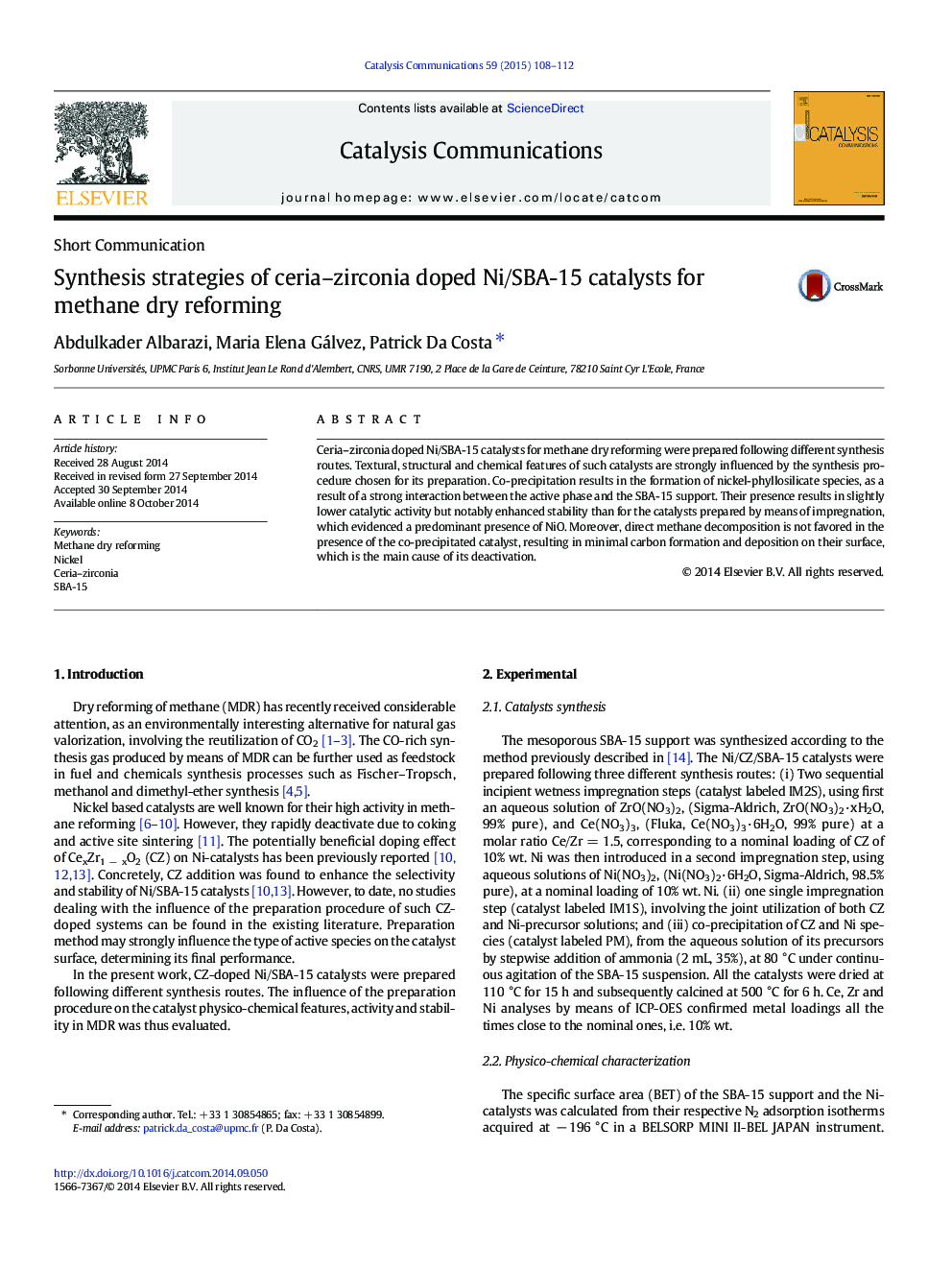| Article ID | Journal | Published Year | Pages | File Type |
|---|---|---|---|---|
| 49528 | Catalysis Communications | 2015 | 5 Pages |
•Three synthesis routes followed to prepare Ni-CZ/SBA-15 for MDR.•Synthesis method influences the type of nickel species.•Co-precipitation favors strong interaction Ni-support: phyllosilicate species.•This results in improved catalytic stability by inhibition of carbon formation.
Ceria–zirconia doped Ni/SBA-15 catalysts for methane dry reforming were prepared following different synthesis routes. Textural, structural and chemical features of such catalysts are strongly influenced by the synthesis procedure chosen for its preparation. Co-precipitation results in the formation of nickel-phyllosilicate species, as a result of a strong interaction between the active phase and the SBA-15 support. Their presence results in slightly lower catalytic activity but notably enhanced stability than for the catalysts prepared by means of impregnation, which evidenced a predominant presence of NiO. Moreover, direct methane decomposition is not favored in the presence of the co-precipitated catalyst, resulting in minimal carbon formation and deposition on their surface, which is the main cause of its deactivation.
Graphical abstractFigure optionsDownload full-size imageDownload as PowerPoint slide
